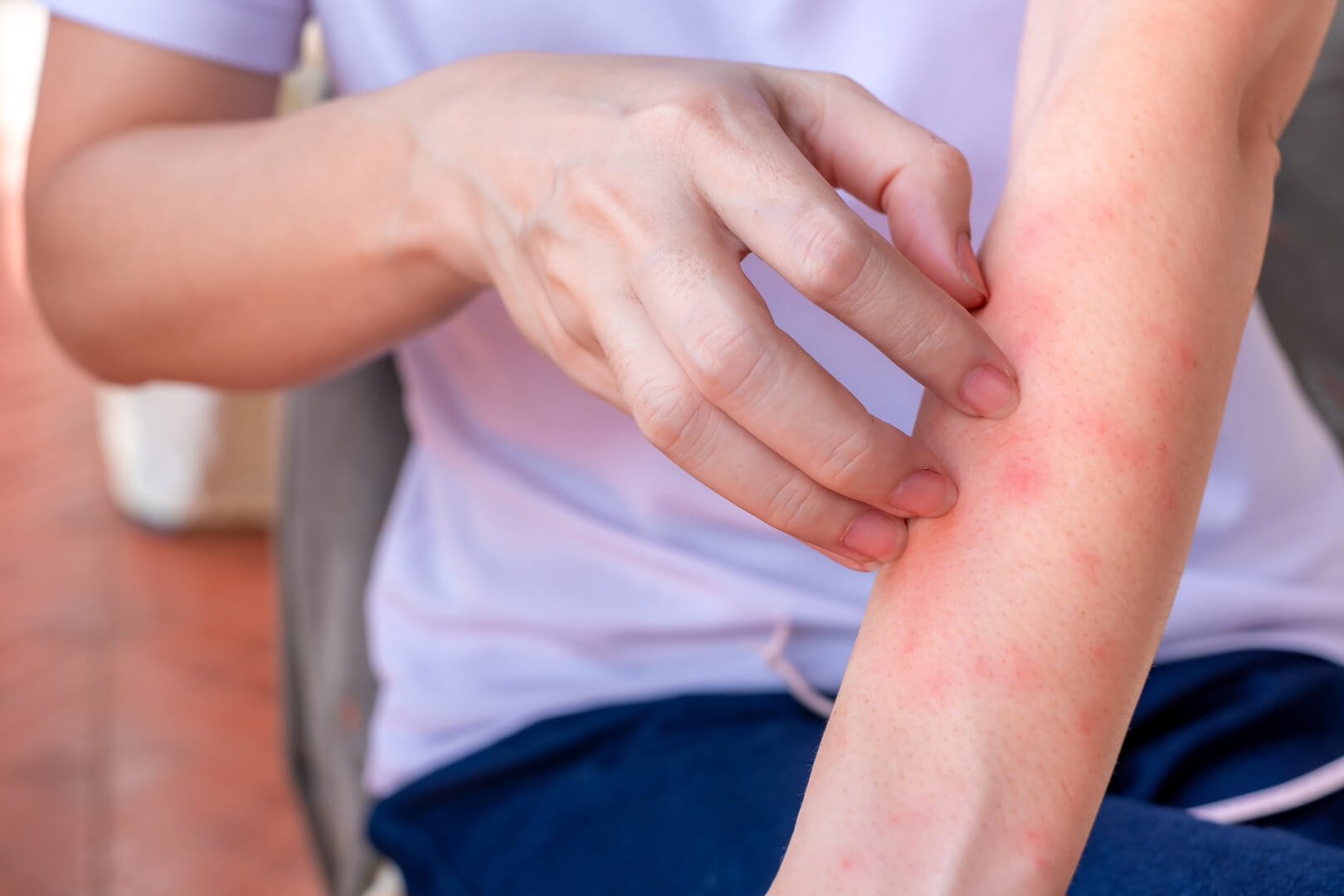Allergies affect more than 100 million people in the United States alone and are among the most common chronic illnesses worldwide. These widespread health issues occur when the immune system overreacts to normally harmless substances such as pollen, food, or animal dander.
An allergy is a specific type of exaggerated immune response in which the body mistakenly identifies a typically harmless substance as a threat and launches a defensive reaction against it. This reaction can affect various organ systems and cause symptoms ranging from mild skin rashes to life-threatening conditions like anaphylaxis.
Understanding the different types of allergies, their triggers, and treatment options is crucial for those affected and their families. From a correct diagnosis and the identification of risk factors to modern therapeutic approaches, many aspects play an important role in the successful management of allergies.
Key Takeaways
- Allergies result from a mistaken immune system reaction to harmless substances and can affect various organ systems.
- Common triggers include pollen, foods, insect stings, and medications, with genetic and environmental factors influencing the risk.
- Diagnosis is made through medical history and specific tests, while treatment ranges from allergen avoidance to immunotherapy.
Contents
- Definition and Mechanism of the Allergic Reaction
- The Role of the Immune System and Antibodies
- How an Allergy Develops: Sensitization and Triggering
2. Common Allergy Triggers and Risk Factors
- Inhalant Allergens: Pollen, House Dust Mites, and Animals
- Food Allergens: Common Triggers
- Other Triggers: Insect Stings, Contact, and Chemical Allergens
- Genetic and Environmental Risk Factors
What is an allergy
An allergy is an overreaction of the immune system to normally harmless environmental substances. During this reaction, the immune system produces specific antibodies, which then trigger allergic symptoms upon re-exposure to the substance.

Definition and Mechanism of the Allergic Reaction
An allergy is defined as an acquired, immune-related hypersensitivity to foreign substances. The immune system mistakenly classifies generally harmless substances, such as pollen or certain foods, as dangerous threats.
Complex biochemical processes occur during an allergic reaction. The body releases various chemical messengers that cause the typical allergy symptoms.
Histamine plays a central role in this process, leading to:
- Redness of the skin
- Swelling
- Itching
- Irritation of mucous membranes
Leukotrienes further intensify the inflammatory response. They cause a narrowing of the airways and increase mucus production.
The intensity of an allergic reaction can range from mild discomfort to life-threatening conditions.
The Role of the Immune System and Antibodies
In people with allergies, the immune system produces special antibodies, known as IgE antibodies, against the allergy-causing substances (allergens). These antibodies attach to mast cells, preparing the body for future encounters with the allergen.
Normally, the immune system protects the body from real threats like bacteria or viruses. In the case of an allergy, however, it reacts hypersensitively to harmless environmental substances.
IgE antibodies can be measured and form the basis for allergy blood tests. Elevated IgE levels indicate a sensitization but do not automatically mean that a clinically relevant allergy is present.
Important Note: A positive allergy test alone is not proof of an allergy. A diagnosis requires both the confirmation of specific antibodies and the presence of corresponding symptoms.
How an Allergy Develops: Sensitization and Triggering
An allergy develops through a two-stage process. The first stage is sensitization, which occurs upon initial contact with the allergen, typically without causing any symptoms.
During sensitization, the immune system recognizes the foreign substance and begins producing antibodies. This process can take days or even weeks.
Allergic reactions only occur upon subsequent contact with the allergen. The already-sensitized immune system then reacts immediately, triggering the typical symptoms.
Heredity plays a significant role. Families with a predisposition to allergies should be particularly cautious with pets, as cross-reactions between different animal dander allergens are common.
The timing of the reaction varies depending on the type of allergy. Immediate-type allergies, such as those to pollen or insect stings, show symptoms within minutes, while other types of allergies have a delayed reaction.
Common Allergy Triggers and Risk Factors
Allergy triggers primarily include inhalant allergens like pollen and house dust mites, food allergens such as nuts and eggs, and contact allergens like nickel. The risk of developing allergies is determined by genetic predisposition and environmental factors such as air pollution.

Inhalant Allergens: Pollen, House Dust Mites, and Animals
Pollen is among the most frequent allergy triggers, causing hay fever. Grass pollens (Gramineae) are particularly problematic and are active from May to August.
Tree pollens mainly appear in the spring. Birch is the most potent tree allergen, followed by beech and hazel. Cypress can cause initial symptoms as early as winter.
Artemisia (mugwort) triggers intense allergic reactions in the late summer. This plant produces particularly aggressive pollen.
House dust mites live in mattresses, pillows, and carpets. Their droppings contain potent allergens that cause symptoms year-round.
Animal allergies are caused by proteins found in skin flakes, saliva, and urine. Cat allergens are especially persistent and spread quickly through the air.
Molds thrive in damp environments and release spores. These allergens are often active throughout the year.
Food Allergens: Common Triggers
Peanuts and tree nuts cause the most severe food allergies. Even the smallest amounts can trigger life-threatening reactions.
Shellfish such as shrimp and crab contain strong allergens. These allergies often develop in adulthood.
Eggs and milk are typical childhood allergies. Many affected individuals develop a tolerance as they get older.
Grains like wheat and barley can trigger gluten sensitivity. This reaction affects the entire small intestine.
Other common triggers include soy, fish, and sesame. Symptoms range from skin rashes to shortness of breath.
Cross-reactions occur when similar proteins are present in different foods. Individuals with a birch pollen allergy often also react to apples or hazelnuts.
Other Triggers: Insect Stings, Contact, and Chemical Allergens
Insect stings from bees and wasps can cause severe allergic shocks. The venom contains enzymes and proteins that strongly activate the immune system.
Nickel is the most common contact allergen. It is found in jewelry, coins, and buttons. The reaction appears as contact eczema at the site of exposure.
Latex causes both contact and inhalation allergies. Medical personnel are particularly at risk due to frequent contact with gloves.
Fragrances in cosmetics and cleaning products can trigger skin reactions. Formaldehyde in furniture can cause respiratory issues.
Medications such as antibiotics, especially penicillin, are among the most dangerous allergy triggers. Reactions can occur within minutes.
Chemicals in the workplace often cause occupational allergies. Hairdressers frequently react to hair dyes, while bakers may react to flour dust.
Genetic and Environmental Risk Factors
Genetic predisposition is the strongest risk factor. If both parents have allergies, 50-70% of their children will also develop allergies.
The risk is particularly high if both parents suffer from the same type of allergy. Without a family history, the risk of developing an allergy is only 15%.
Air pollution can worsen existing allergies and promote their development. Particulate matter from vehicle exhaust makes the airways more permeable to allergens.
Smoking during pregnancy increases a child’s risk of developing asthma by 60%. Even grandmothers who smoked can influence the allergy risk of their grandchildren.
Excessive hygiene can weaken the immune system. Children raised on farms develop allergies less often than city children because they have more contact with bacteria.
Breastfeeding helps protect against allergies. Children who are breastfed for four months have a lower allergy risk than non-breastfed babies.
Symptoms and Clinical Presentations of Allergies
Allergic reactions manifest through a variety of symptoms affecting different organ systems, with the respiratory tract, skin, and eyes being the most commonly affected. Symptoms range from mild discomfort to life-threatening conditions such as anaphylaxis.

Symptoms of the Respiratory Tract, Skin, and Eyes
Respiratory symptoms are particularly common with inhaled allergens. The upper respiratory tract often reacts with allergic rhinitis, which presents as sneezing, a congested nose, and a watery nasal discharge.
In the lower respiratory tract, allergic asthma frequently develops. Those affected suffer from shortness of breath, wheezing sounds during breathing, and a dry cough. These symptoms typically worsen upon contact with the triggering allergen.
Eye symptoms include itching, redness, and increased tear production. The conjunctiva (the mucous membrane covering the eye) can swell and cause a burning sensation. These symptoms often occur in conjunction with nasal symptoms.
Skin reactions appear as eczema, with scaly, reddened skin, or as hives (urticaria), characterized by itchy welts. Contact allergies lead to localized dermatitis on the areas of skin that were touched.
Immediate Allergic Reactions and Anaphylaxis
Immediate-type allergies develop symptoms within seconds to minutes after allergen contact. These reactions are common in pollen, animal dander, and food allergies.
Anaphylaxis represents the most severe form of allergic reaction and can be life-threatening. It often begins with skin itching and a rash, followed by shortness of breath and circulatory problems.
Anaphylactic shock leads to a dramatic drop in blood pressure and potential loss of consciousness. Without immediate medical treatment, it can be fatal. Common triggers include insect stings, foods, or medications.
Food allergies often cause nausea, vomiting, and diarrhea. Swelling in the mouth and throat can obstruct breathing and requires urgent medical attention.
Chronic Symptoms and Complications
Untreated allergies can develop into chronic conditions with persistent symptoms. Chronic asthma leads to ongoing inflammation of the bronchial tubes and impaired lung function.
Year-round (perennial) allergic rhinitis, caused by dust mites or animal dander, places a continuous burden on those affected. Constant nasal congestion can lead to sleep disturbances and difficulty concentrating.
Atopic dermatitis (neurodermatitis) is characterized by chronically inflamed, scaly patches of skin accompanied by intense itching. The skin becomes more sensitive and prone to bacterial infections.
Long-term complications include the development of asthma in individuals who initially only had nasal symptoms. It is also possible to develop new allergies to other substances, which can intensify symptoms and complicate treatment.
Diagnosis and Therapy of Allergies
The diagnosis of allergies involves various testing methods to confirm sensitization. Treatment is based on three main pillars: allergen avoidance, medication, and immunotherapy.

Diagnostic Methods and Allergy Tests
If an allergy is suspected, the affected individual should consult an allergist. These specialists, who often have a background in dermatology, ENT, pulmonology, or pediatrics, hold an additional qualification in allergology.
The prick test is the standard procedure for immediate-type allergies. During this test, small amounts of different allergens are introduced into the skin. If sensitization is present, raised welts and redness will appear within 15-20 minutes.
The patch test (epicutaneous test) is used to identify contact allergies. Allergen-containing patches are applied to the skin for 48 hours and the results are evaluated afterward.
RAST tests and other blood analyses measure specific IgE antibodies against various allergens. These laboratory tests are particularly useful for individuals with skin conditions or for those currently taking antihistamines.
The prick-by-prick test uses fresh food items directly as the testing substance. This is especially helpful when a food allergy to non-standardized allergens is suspected.
Provocation tests are considered the gold standard in allergy diagnostics. In a controlled medical setting, the suspected allergen is administered to the patient to trigger and observe a potential allergic reaction.
Medication-Based Treatment Options
Antihistamines block the effects of histamine and alleviate symptoms like itching, sneezing, and watery eyes. Modern, second-generation H1 antihistamines are less likely to cause drowsiness.
Corticosteroids have a potent anti-inflammatory effect and are used for severe allergic reactions. They are available in various forms, including nasal sprays, eye drops, creams, or tablets.
Decongestant nasal sprays can offer short-term relief for a blocked nose. However, their use should not exceed one week to prevent a rebound effect.
Leukotriene modifiers inhibit the action of inflammatory mediators and are particularly used in the treatment of allergic asthma. They are most commonly available as tablets.
In cases of severe allergic reactions, emergency medications like epinephrine (adrenaline) auto-injectors can be life-saving. Individuals at risk should carry one with them at all times.
Immunotherapy and Prevention
Specific immunotherapy (also known as hyposensitization) is the only treatment that targets the underlying cause of an allergy. The goal is to gradually accustom the immune system to the allergen.
Subcutaneous immunotherapy (SCIT) is administered through regular injections under the skin. This treatment typically lasts for three to five years and demonstrates high success rates for pollen and insect venom allergies.
Sublingual immunotherapy (SLIT) involves tablets or drops that are placed under the tongue. It is particularly effective for allergies to grass pollen and house dust mites.
Allergen avoidance is the most important component of allergy management. For house dust mite allergies, measures like using special anti-allergy bedding and regular vacuuming can be very effective.
Preventive measures during early childhood can reduce the risk of developing allergic conditions. Breastfeeding and controlled, early exposure to potential allergens are considered to play an important role.




